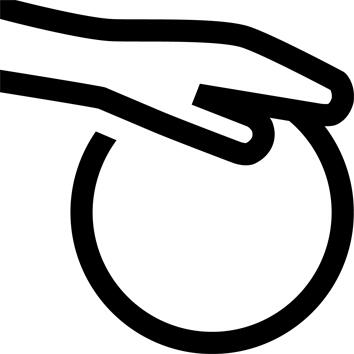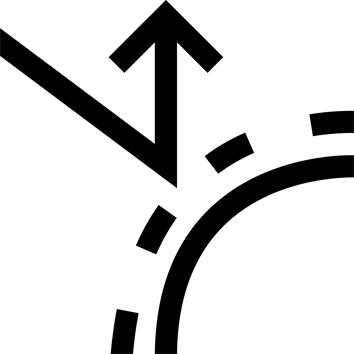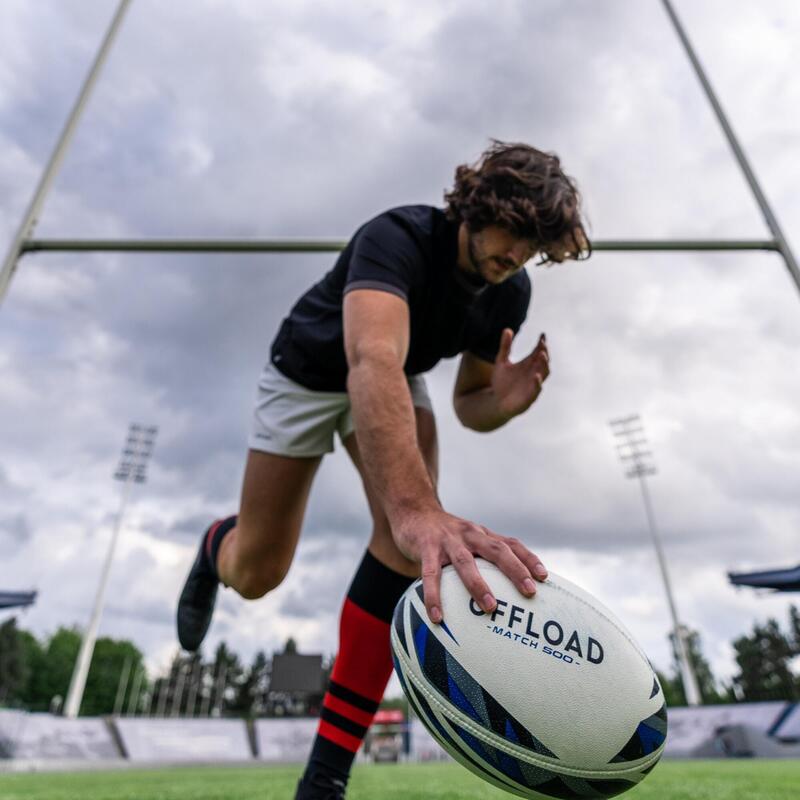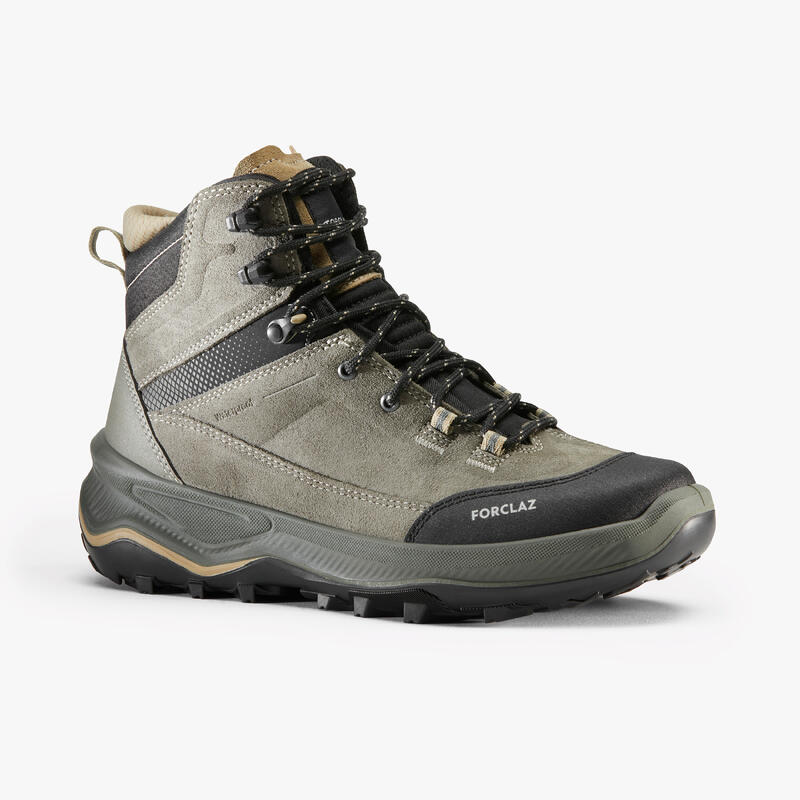Technical data
Not all balls are made the same way. Ball panels can be sewn in different ways: machine-sewn or hand-sewn for better wear resistance, shape retention and performance.
A ball's grip is what enables the ball to grip when passing and receiving the ball.
High-quality grip
The grip on our 500 ball is the result of several years' work with our technical partner Jean Marc Doussain, the Sport Lab teams at Decathlon, the LMRCV and OMR clubs.
A ball for regular practice and matches
If you train or play matches on a regular basis, and are looking for a durable ball that guarantees resistant inflation and comfortable play both in the hand and on the foot, look no further than our 500 range.
Footwork
This ball with its ovoid shape provides a wider contact surface with the foot, making it more comfortable to kick.
The World Rugby standard
All our balls comply with World Rugby regulations for use in matches.
For size 5:
Shape: the ball must be oval, made up of four panels.
Dimensions: major axis length 280 to 300 millimeters, circumference 740 to 770 millimeters, minor perimeter 580 to 620 millimeters
Materials Leather or similar synthetic materials.
Weight: 410 to 460 grams.
Air pressure at start of game: 65.71 to 68.75 kilo pascals or 0.67 to 0.70 kg per cm².
Choosing the right size
There are different sizes of balloons.
Size 5: 15 years and over
Size 4: 10 to 14 years
Size 3: 5 to 9 years
Size 2 - Midi: 3 to 4 years
Size 1 - Mini: under 3 years
Co-design
Our balls are designed in collaboration with our technical partners Jean Marc Doussain and Jonathan Wisniewski, professional players in the TOP14.
They support us in improving our balls by participating in all stages of design, and validating them in tests reproducing all situations and conditions of play.







